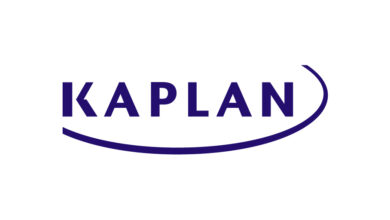Outlook on the Optical Sorter Global Market to 2027: Players Include Buhler, Tomra Systems ASA, Hefei Meyer Optoelectronic Technology and Allgaier Werke – ResearchAndMarkets.com

DUBLIN–(BUSINESS WIRE)–The “Global Optical Sorter Market Size, Share & Industry Trends Analysis Report By Application, By Platform, By Type, By Regional Outlook and Forecast, 2021-2027” report has been added to ResearchAndMarkets.com’s offering.
The Global Optical Sorter Market size is expected to reach $3.8 billion by 2027, rising at a market growth of 9.3% CAGR during the forecast period.
Optical sorters are a group of automated specialized systems that use cameras and laser beams in order to automate the procedure of sorting solid goods. Agricultural seeds, coffee, fruit, cereals, confectionery, nuts, meat, and seafood, as well as recycling materials such as plastic, metal, organic waste, and paper; and mining materials including precious metals and industrial minerals are all sorted using the optical sorter. An optical sorter has a number of advantages, including increased productivity, the production of high-quality commodities, and lower labor expenses.
The feed system, image processing unit, optical system, and separation system unit are the major components of an optical sorter. In order to disperse the material into a single layer, the feed system is commonly used to feed the high-speed conveyor belt. To detect the substance, it is accelerated and examined by numerous cameras or sensors. Some of the light is absorbed by the materials on the belt as the material passes under the light, while other light waves are reflected. A number of camera lenses pointing towards the conveyor belt capture the reflected light waves.
The spectrometer reads each material’s unique light wave, which is used to distinguish between distinct types of materials. Once the material has been detected, it is evacuated in one of two ways, upward or downward. Optical sorting can be used to distinguish and separate a variety of materials, such as timber, plastics, and glass. Various companies are currently improving lenses and cameras, as well as developing systems that are better and faster at picking and retrieving materials.
The most important element fueling the growth of the optical sorter market is increased food safety and security concerns. As consumers expect higher levels of product quality, there is a demand for improved sort performance in order to detect minor and subtler flaws. There is rigorous regulation stating that all food makers are concerned for the security and safety of their products and due to this, food cannot be dangerous or harmful to the health of customers.
Market Growth Factors:
The growing trend of automation
In the modern era, the trend of automation is rapidly increasing. In addition, with the help of optical sorting technology, companies can enhance their performance by eliminating errors and increasing efficiency by using automation. Several sectors are focusing on automation to speed up operations along with maintaining the quality of final products. Growing automation in main optical sorter target industries, such as recycling, food, and mining, is considered as a favorable indicator for the growth of the market. Innovative and clever technologies have been leveraged to manage and minimize specific waste, like food and plastic waste, in recent years. Many food processing procedures require automated sorting, and the demand for this technology is growing in order to ensure consistent product quality as well as traceability of all foreign materials.
The advent of advanced detection technologies
Optical sorters may now improve product quality, increase yield, and better understand parts of processing processes due to the recent improvements in sensing technology and intelligent software. Despite these developments, producers still face a number of problems, the most significant of which is the complexity of operating optical sorters.
To address these issues, new software is focusing on user-friendly systems that provide processors the ability to set rejection requirements. Optical machines are growing easier to use as well as becoming more intelligent. Advanced statistics, as well as data analysis tools, are widely available for monitoring optical sorter performance parameters.
Marketing Restraining Factor:
The high initial cost of the product
Optical sorting equipment is expensive because it employs modern technologies. Although optical sorters offer numerous benefits, their upfront cost may prevent certain potential end-users with tight budgets from adopting these devices.
The cost of ancillary equipment such as compressed air, dust removal, and washing systems, as well as the cost of additional sizing and crushing equipment, and the cost of optional equipment, including conveyors to feeders, containers, sorting crates, and conveyors from channel to collecting containers, is included in the capital investment for the installation of optical sorters. It also includes the total cost of the system’s installation. Moreover, the maintenance cost of the product is also high due to the highly expensive products that are comprised in the machine.
Market Segments Covered in the Report:
By Application
- Food,
- Recycling, and
- Mining
By Platform
- Belt
- Lane
- Hybrid, and
- Freefall
By Type
- Cameras
- Lasers
- Hyperspectral cameras & Combined Sorters
- NIR (near-infrared) and
- Others
By Geography
- North America
- Europe
- Asia Pacific
- China
- LAMEA
- Rest of LAMEA
Companies Profiled
- Buhler Group
- Tomra Systems ASA
- Hefei Meyer Optoelectronic Technology, Inc.
- Allgaier Werke GmbH
- Key Technology, Inc. (Duravant LLC)
- Hefei Taihe Intelligent Technology Group Co., Ltd.
- STEINERT GmbH
- Sesotec GmbH
- CP Global
- Satake USA, Inc. (Satake Corporation)
For more information about this report visit https://www.researchandmarkets.com/r/tfico5
Contacts
ResearchAndMarkets.com
Laura Wood, Senior Press Manager
[email protected]
For E.S.T Office Hours Call 1-917-300-0470
For U.S./ CAN Toll Free Call 1-800-526-8630
For GMT Office Hours Call +353-1-416-8900




